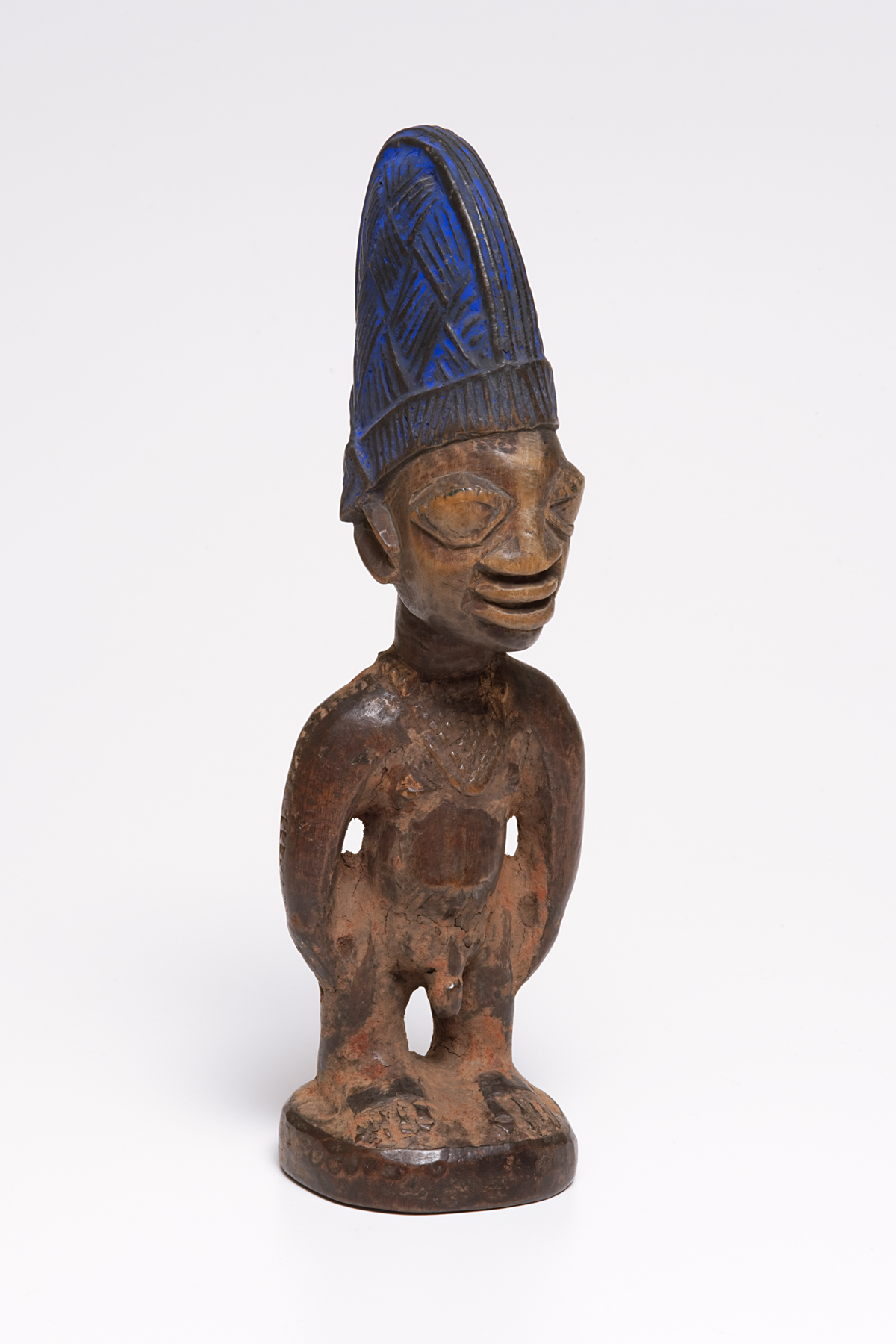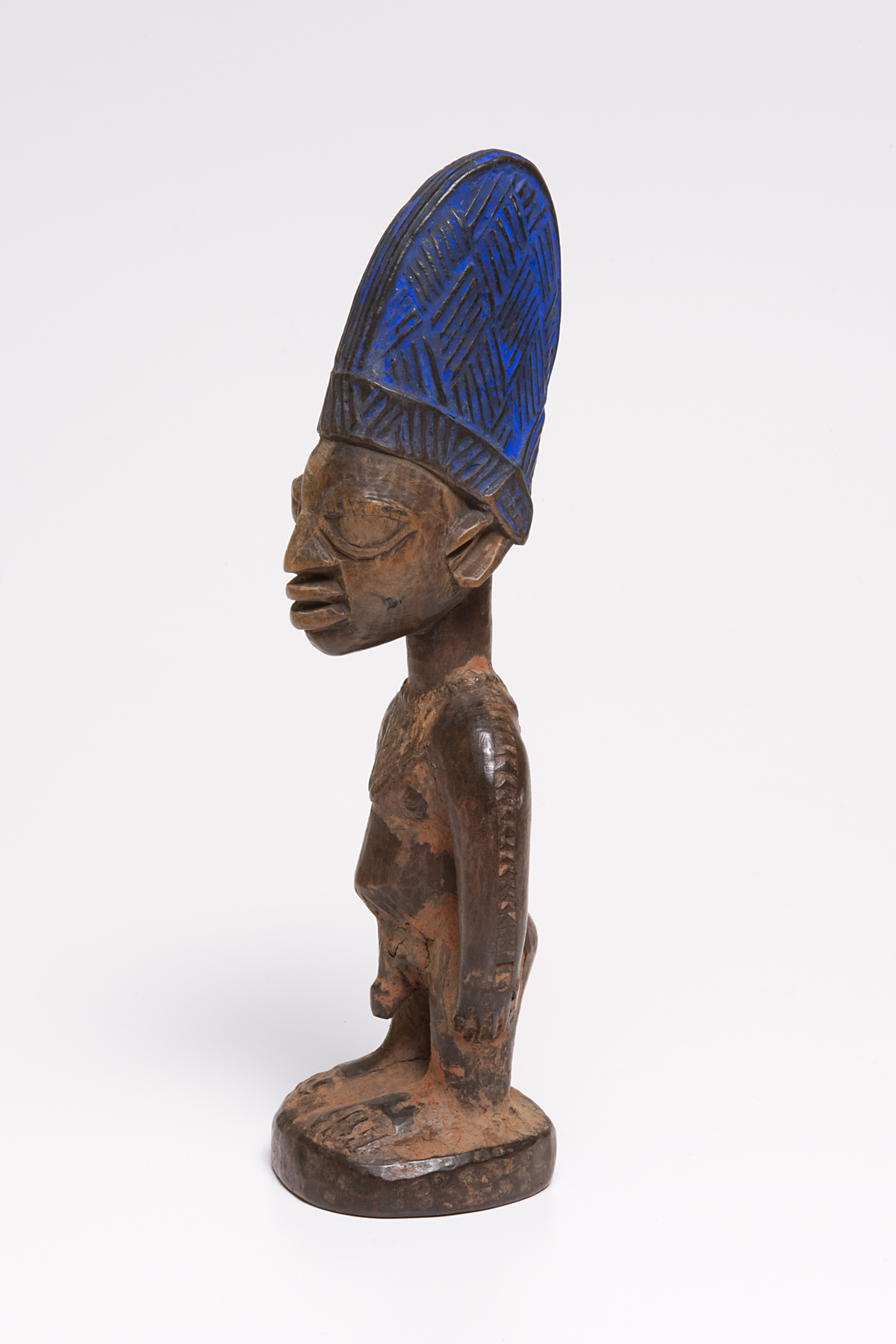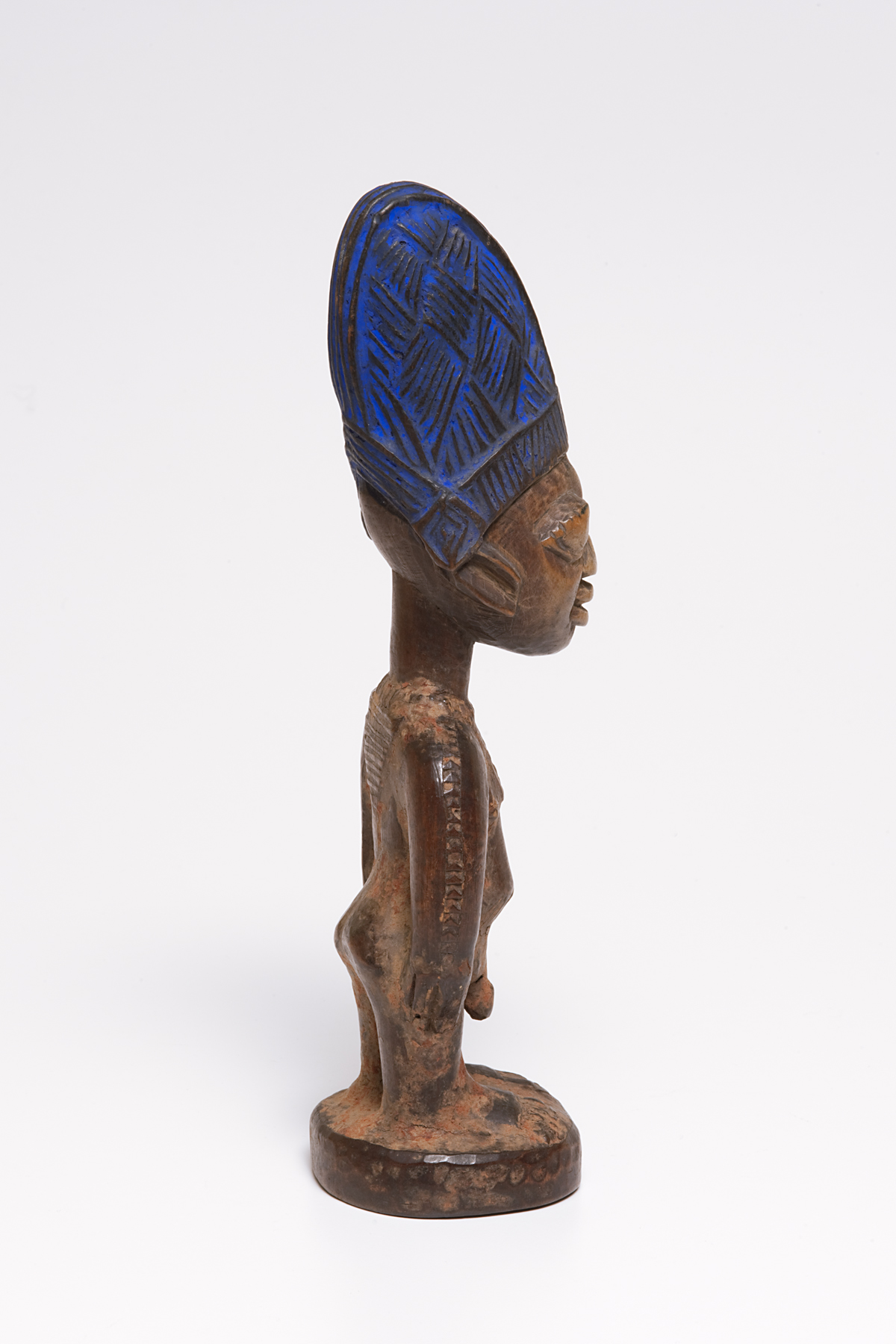ere ibeji (twin figure), unrecorded Ondo artist
Artwork Overview
unrecorded Ondo artist, artist
ere ibeji (twin figure),
late 1800s–1975
Where object was made: Nigeria
Material/technique: wood; pigment; carving
Dimensions:
Object Height/Width/Depth (Height x Width x Depth): 29 x 9.5 x 9 cm
Object Height/Width/Length (Height x Width x Length): 11 7/16 x 3 3/4 x 3 9/16 in
Object Height/Width/Depth (Height x Width x Depth): 29 x 9.5 x 9 cm
Object Height/Width/Length (Height x Width x Length): 11 7/16 x 3 3/4 x 3 9/16 in
Credit line: Gift of Mr. and Mrs. H. Kenneth Palmer
Accession number: 2007.2703
Not on display
If you wish to reproduce this image, please submit an image request








